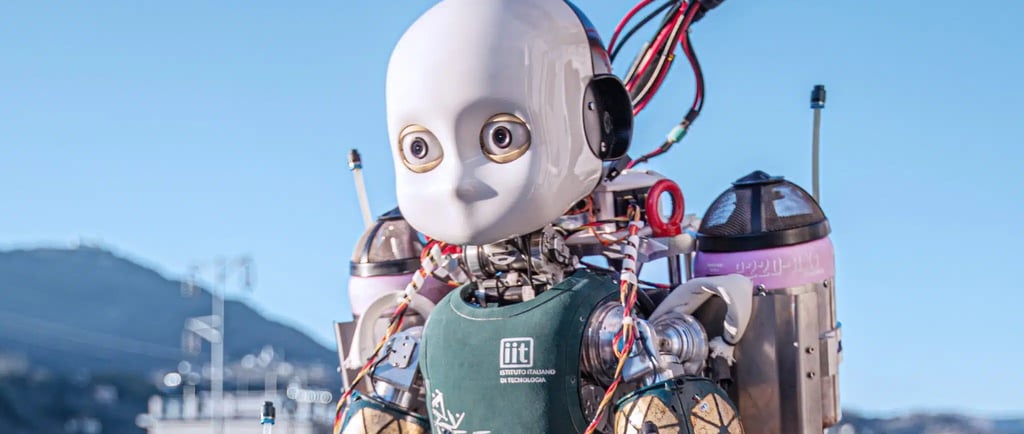Robot Takes Flight!
A humanoid robot equipped with a jetpack has achieved flight for the first time, marking a significant milestone in robotics, according to the Italian Institute of Technology in Genoa.
7/1/20252 min read


✈️ The First Flying Humanoid Robot Has Taken Off: Meet iRonCub3
In a historic moment for robotics and aerospace technology, the Italian Institute of Technology (IIT) has officially launched the first jet-powered humanoid robot into flight. Dubbed iRonCub3, this innovation marks a leap toward multi-modal mobility, blending terrestrial locomotion with vertical jet propulsion.
🤖 What Is iRonCub3?
Developed in collaboration with the Polytechnic University of Milan and Stanford University, iRonCub3 is a compact humanoid robot measuring just under 3 feet tall. Weighing around 22 kg (approximately 48 pounds), the robot features four jet thrusters—two mounted on its back and one beneath each arm.
The design is heavily influenced by both aviation engineering and robotic locomotion principles, enabling it to lift off, hover, and potentially navigate challenging environments from both the ground and the air.
🚀 A Historic First Flight
In recent test footage, iRonCub3 achieved a controlled vertical takeoff, lifting nearly 50 centimeters off the ground and hovering stably. While tethered for safety, the demonstration showcased the power of AI-based flight control algorithms paired with real-time thrust modulation from its miniature jet engines.
“This is the first time a humanoid robot has achieved jet-powered flight in a fully coordinated, stabilized manner,” noted the lead engineers at IIT.
🔍 Why This Matters
1. Multi-Modal Mobility
Most robots today are bound to wheels or legs. iRonCub3 introduces a future where walking and flying can coexist—ideal for real-world environments that demand both dexterity and reach.
2. Search and Rescue Potential
Imagine a future where robots can fly into collapsed buildings, land safely, and assist with life-saving tasks. This robot paves the way for aerial-ground hybrid units ideal for disaster recovery and remote aid missions.
3. Advanced AI Flight Modeling
Behind the scenes, neural networks are used to predict and manage the aerodynamic behavior of the robot in real time. These AI systems were trained in wind tunnels before being deployed in physical tests—blending robotics, aerospace, and machine learning into a seamless system.
📸 Public Reaction and Critique
While engineers celebrated the milestone, the robot’s design drew mixed reactions online. Some viewers noted its almost “baby-like” facial features, with social media sparking humor, curiosity, and even unease.
Still, most experts agree: this is just the beginning.
📽️ Watch It Fly
Curious to see this marvel in action?
813-419-7227
© Copyright TWO WOLVES DEFENSE AND SECURITY. All rights reserved.

